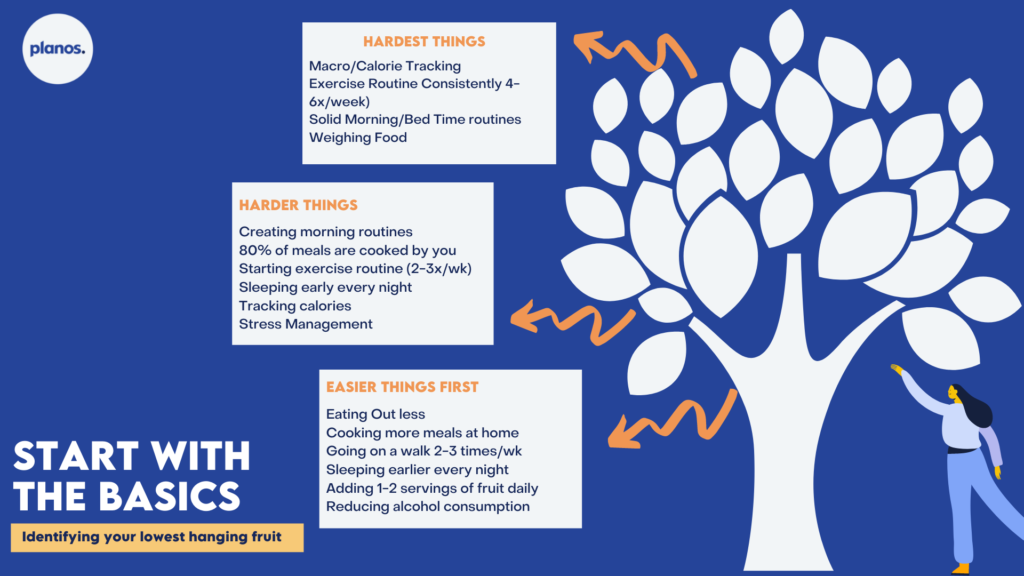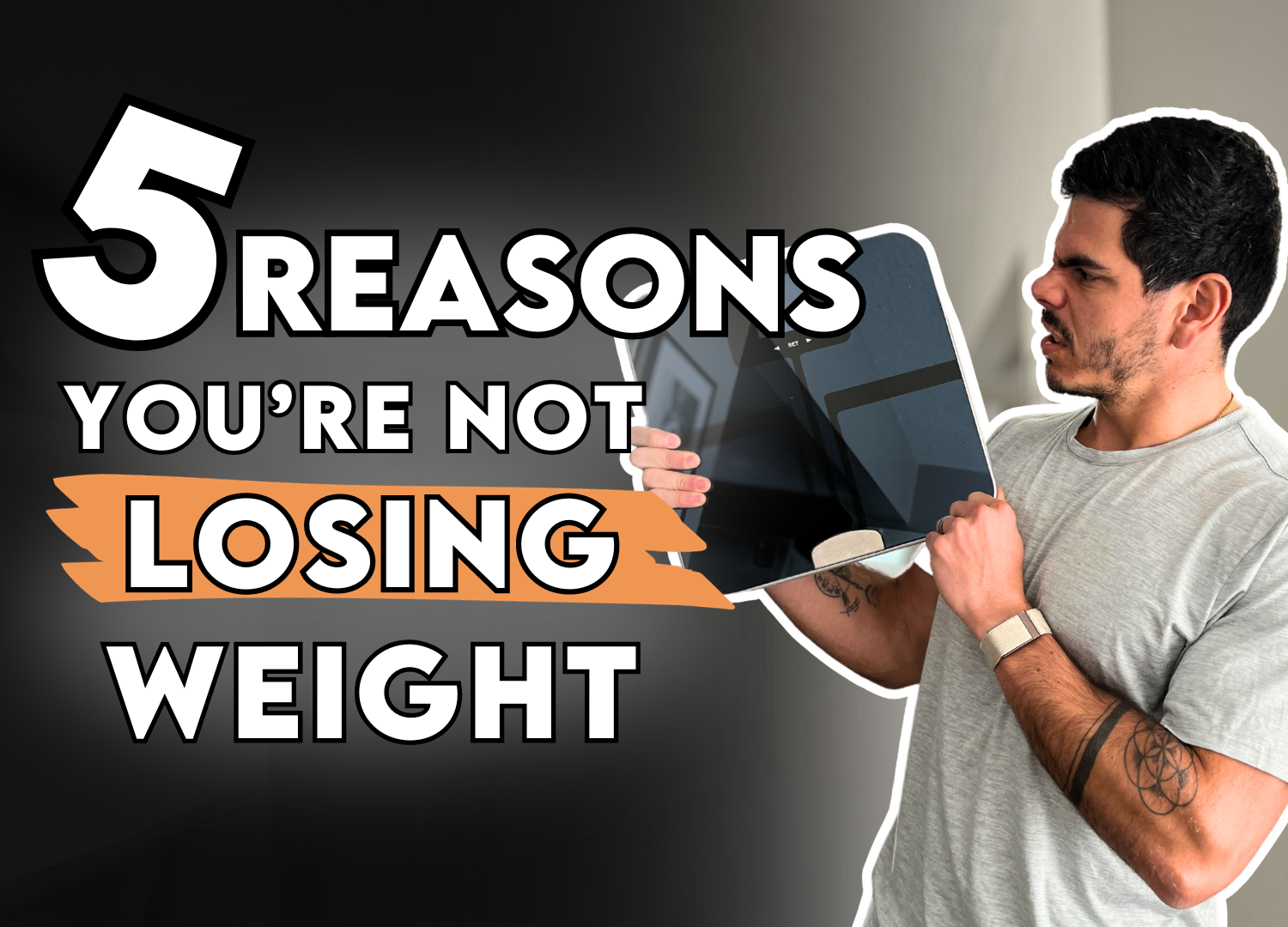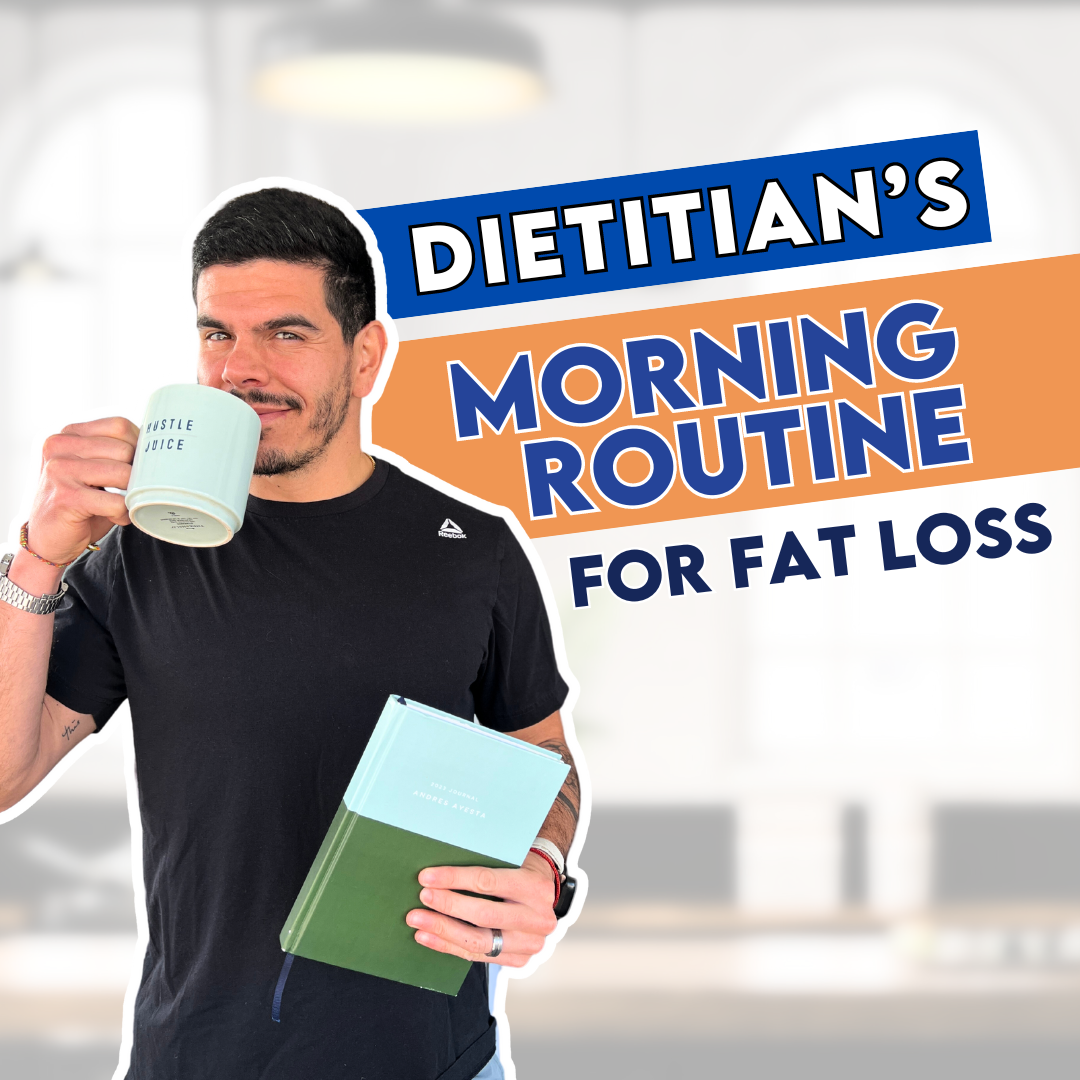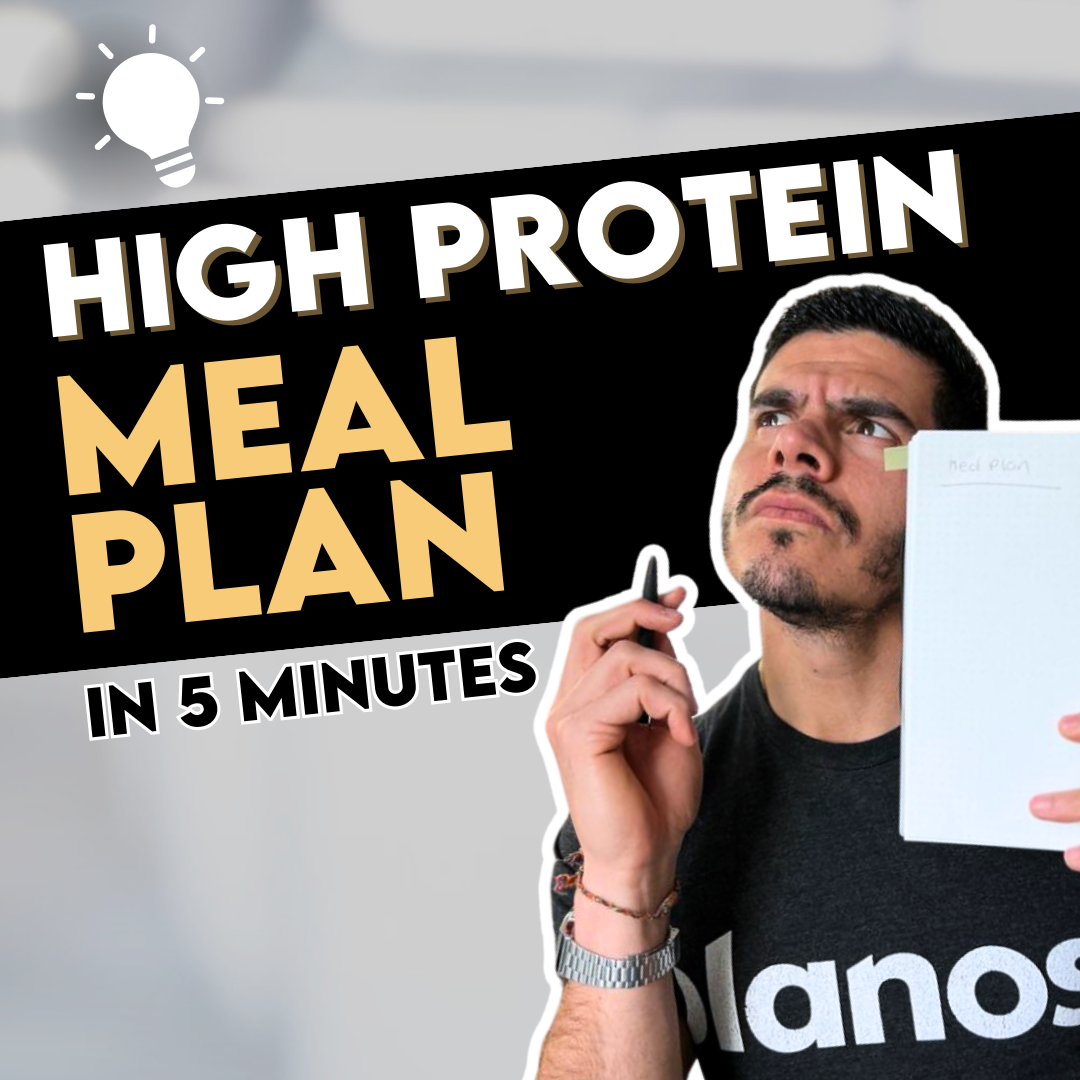Today, we sat down with Andres, Registered Dietitian and founder of Planos, to talk about where he starts with his clients who are looking to lose weight so that they can make lasting lifestyle changes rather than get stuck using band-aid solutions.
Interview with a Dietitian: Where to Start with Weight Loss
Like most people, you may struggle with knowing where to start with weight loss. This is especially true when you feel like you’ve hit rock bottom in your health; maybe your weight is higher than it’s ever been, you have no energy to get through the day, you don’t sleep well at night, and you can’t remember the last time you went to the gym.
When it feels like nothing is going well and everything needs to change, finding the right starting place either keeps you from ever starting, or leads to unsustainable approaches when you try to overhaul your entire life at once.
It can be tempting when you’re feeling terrible about your body to look for a quick fix. Usually this comes in the form of a restrictive diet because you want to solve the problem as fast as possible. But restrictive diets almost always backfire, often leading to overeating and gaining back the weight you lost.
Today, we sat down with Andres, Registered Dietitian and founder of Planos, to talk about where he starts with his clients who are looking to lose weight so that they can make lasting lifestyle changes rather than get stuck using band-aid solutions.
Interview with Andres
When clients come to you, what are the most common problems you see with people trying to start out with improving their nutrition?
Most people are looking for a quick fix. Often they’re trying to follow advanced plans with lists of rules to follow, but they don’t really understand why they’re following those rules. If you’ve been dieting for a long time, you get really good at following directions, but often those directions become overwhelming and unsustainable. Instead of starting small and addressing the root causes, these kinds of plans try to do too many things at once.
Of course, in the beginning there’s the intrinsic motivation because you feel so ready to make a change and you do everything by the book, but once you get into week 3 or 4 that motivation starts to dwindle and eventually you just give up on it.
How is your approach different and how do you prevent people from losing that motivation three weeks in?
With our clients, we like to start with what I call the “lowest hanging fruit”, which is our approach to getting people results that are actually going to be sustainable.
I always say this to the people I work with: I don’t care so much about you achieving your goal as much as I care about your ability to be able to sustain that goal. So instead of starting with a long list of changes to make, we like to start with the basics, define what the lowest hanging fruits are, and start to make those changes.
I’d like to get more into the lowest hanging fruit idea in a minute, but first, when people come to you, what is usually the trigger for them to seek help for their nutrition?
Often when people come to me they have the mentality that they’re either on a diet or off the diet. Off the diet means they can do whatever they want, and on the diet means they are following directions or eating things from a list of acceptable foods. So typically, when people decide to make a change and get support from a dietitian, their breaking point is that constant cycle of going on and off and they’re just so tired of starting over and over again. So that on/off switch mentality is the first thing they’re trying to correct.
Let’s get a little bit more into what you mean by the lowest hanging fruit. Can you explain that concept?
Okay, to explain the idea of the lowest hanging fruit, I want you to imagine a fruit tree. My neighbor actually has a mango tree out there beside the house. So imagine you’re so hungry and you’re walking around and you see this tree with beautiful mangoes all over it. The best ones are at the top, but it’s pretty hard to reach those. Chances are, you’re going to have to climb the tree to get them, and if you don’t know how to climb a tree, that’s going to be pretty difficult. You might have to practice climbing, or get a ladder, just so you can get that perfect mango at the top.
Alternatively, there are other mangoes at the bottom. They’re still great, but maybe they aren’t as big and beautiful as the ones at the top. But if you’re hungry, they’re still going to feed you and you’re easily able to reach them. You just need to reach up your hand and you’ll be able to grab three or four of them.
The whole concept of the lowest hanging fruit in nutrition is trying to identify what the easily accessible changes are going to be for you. So I want you to imagine that the top of that tree is your end goal, like the six-pack for some people, or the 50 lbs. weight loss goal, or a performance-specific objective. But on the way up to the top there are other goals and habits you need to build along the way to get to that goal.
How do you figure out what a client’s lowest hanging fruits are? Can you give some examples of these easy goals you can start with?
We ask a lot of questions in our intake forms for clients, which people reading this can ask themselves.
First is thinking about their biggest struggle. Like, for example, is it food preparation? Is it not having time to cook? Not knowing what to put on your plate? Fear that everything you eat is making you “gain weight”? From there, that helps us identify the biggest priority areas to make changes.
So, what are those lowest hanging fruits that I typically get people to start off with?
It’s just some of the basics, the “boring” stuff. Sometimes it’s going to be, you know what, number one, we need to start creating a meal routine. So many people go through the day and one day they have breakfast and other days they don’t have breakfast because they don’t have time. Or they skip lunch because they’re too busy. Or they skip the entire day of eating and they come home at night and devour everything in the kitchen. Those inconsistent patterns are typically the reason why you’re struggling with so many different things, such as energy and workouts because there is no consistency.
So the first thing we start with isn’t a specific diet plan. It’s just setting times for consuming foods: breakfast, lunch, and dinner. Maybe a couple snacks. That is your only goal for the first week or two. Then, from there we can get into other tools that build on the meal schedule, and get people to start thinking what foods they should try and eat more and less of, without making anything “off limits”.
My philosophy on nutrition is what can we add more of into your diet? Not looking at what we can remove. For example, do you like to have a sandwich for breakfast? How about we add a piece of fruit on the side for some extra color and fiber.
Another common low hanging fruit? Hydration. It’s the easiest and cheapest thing to fix in your nutrition.
How many of these lowest hanging fruits should people try to focus on at one time?
I usually recommend anywhere between two to three things at a time, and it’s not all nutrition-related. We also look at lifestyle, mindset, and movement and see what easy changes we can make in those areas. Maybe it’s a 10 minute walk at lunchtime, or creating a schedule for the day.
So we’ve been talking about these basics, but now let’s look at what the next level up is. What do you consider basic and what is more advanced?
I would say it differs for each person because everybody starts at a different place. Based on where you are with your knowledge and experience the lowest hanging fruits are going to look very different. So our goal is to look at the client and see what the next lowest hanging fruit is; the next most accessible change they can make.
But as we get to higher levels, beyond just basic habit changes, that’s where we can start using more advanced tools like macro counting or calorie counting based on a person’s specific goals.
I would say there are two really valuable things about working with a coach on this: the first is that the coach knows all the tools that are out there, both the easy habits and the more advanced ones, and they’ve used the tools on hundreds of people. They know who the tools work for and who they don’t work for and can apply them to the job.
The second thing is that a coach can help you avoid taking on too much at a time. A good coach narrows your focus to only the most important things and holds you accountable to those things.
Key Takeaways
When people try to make changes to their health, their first instinct is to make the biggest changes first. For example, they start intense resistance training 6 times a week, weighing food, and tracking macros, all at the same time.
Instead, here is what you should do:
- Identify the things to change that require the least effort (the lowest hanging fruit)
- Slowly scale up your efforts as you become more confident and start to feel better
Check out the graphic below for some examples of low hanging fruits and more advanced strategies:

Getting More Support for Fat Loss
If you are lost and have no idea where to start, we have helped hundreds of clients achieve their goals sustainably for the past 5 years with our proven method. Our signature program, the Nutrition Makeover Method, is a hybrid program that combines one-on-one coaching and group guidance to finally accomplish your nutrition, health, and body goals.
This program allows you to master 4 key areas of your health: Nutrition, Mindset, Lifestyle, and Movement, helping you…
- Lose weight and fat and keep it off.
- Build a better relationship with food.
- Gain your confidence and self-esteem back.
- Regain strength, energy, and vitality back.
- Get control over your food choices.
Ready to make a change and finally give up restrictive and unsustainable dieting forever? Click here to apply to our program.
TO CONNECT WITH ME
Instagram: www.instagram.com/andresayesta
TikTok: https://vm.tiktok.com/tLLoyS/
Youtube www.youtube.com/c/andresayesta
Podcast IG page: www.instagram.com/planos_nutrition
On Facebook: https://www.facebook.com/planosnutrition
Our Facebook Community: https://www.facebook.com/groups/1934943366627043/?ref=bookmarks
FREE RESOURCES
To download my Macro Counting Guide tap here
To download my Macro-Friendly Meal Planning Guide tap here
JOIN OUR PRIVATE FACEBOOK COMMUNITY
Planos Nutrition Club – tap here
FOR NUTRITION COACHING
Apply here at https://planosnutrition.com/application
explore more
explore more


